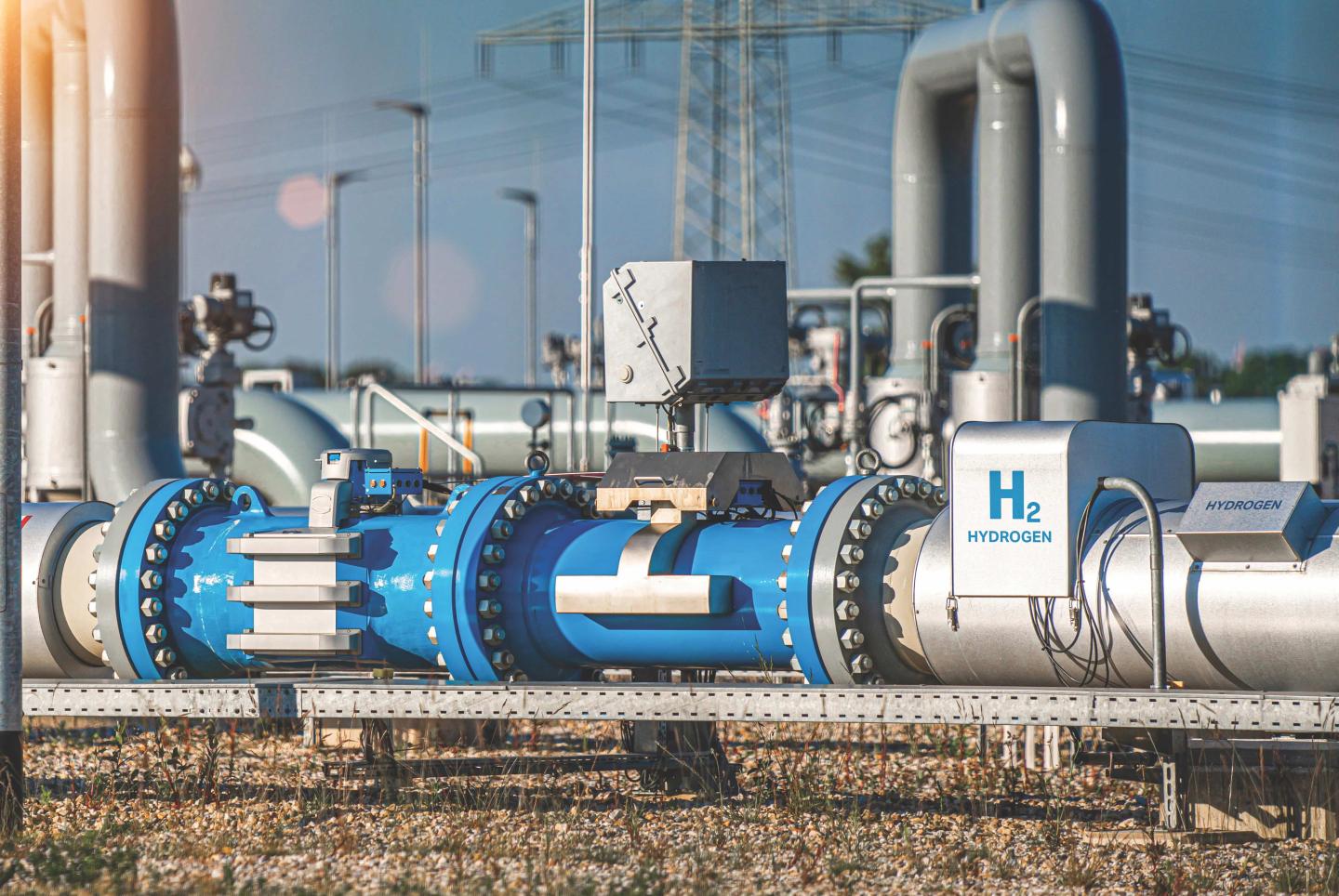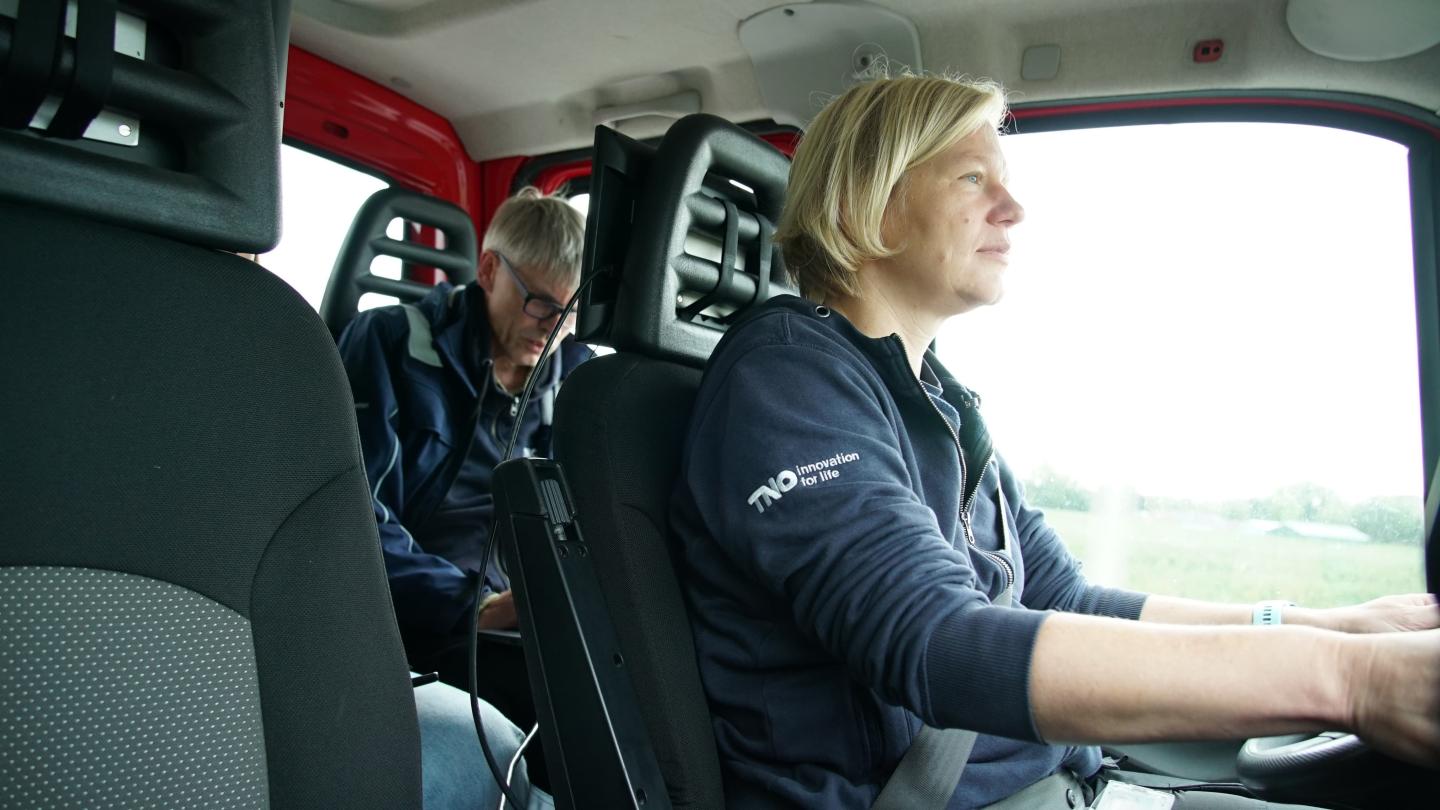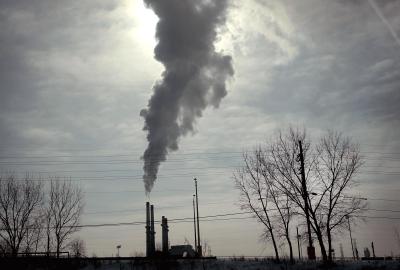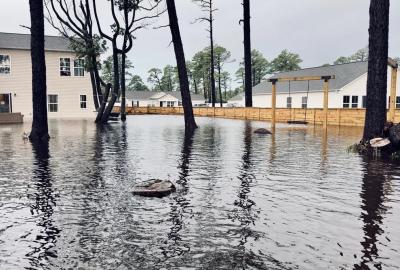Can the world’s smallest molecule be a big clean energy hero? New study examines hydrogen.
In the race to find clean energy solutions, hydrogen emerged as a hopeful contender: A versatile “fuel of the future” that could be produced and used with little to no carbon pollution, revolutionizing air travel, long-haul shipping, steelmaking, heavy manufacturing and more.

The past decade has seen a flurry of investments and government initiatives to support hydrogen energy development, but recently, scientists have highlighted two sobering realities. Hydrogen, while not a greenhouse gas itself, can indirectly create a powerful climate-warming effect through chemical reactions when it’s released into the atmosphere.
And hydrogen is a tiny, slippery molecule that leaks easily. In fact, it’s sometimes intentionally released as part of normal operations at hydrogen facilities.
A study by scientists from Environmental Defense Fund demonstrated that these emissions, if widespread, could undermine the very benefits that make hydrogen so appealing.
But hydrogen emissions in the real world have barely been measured — until now.
A new sensor, a critical question
A major new research study, launched this spring, is measuring hydrogen emissions from facilities across North America and Europe. Scientists are using a groundbreaking new hydrogen sensor to do it: the first to accurately measure hydrogen loss rates on-site, in seconds and with parts-per-billion precision.
The new study, coordinated by EDF, is the first large-scale project to measure leaks of the world’s smallest molecule in real time. It's also notable for bringing together industry, not-for-profit, academia and applied research firms to do it. Together, these groups seek to answer a critical question about hydrogen: How much of the gas is being released from the industry’s current operations and infrastructure, and what does that mean for the climate — and the future of a burgeoning new global hydrogen economy?
Companies and countries have invested billions in hydrogen technologies, and more than 60 countries have adopted national hydrogen strategies. The International Energy Agency predicts the size of the hydrogen market will soar from $1.4 billion today to $12 billion by 2030. Without hard data on emissions, government policies and industry practices could easily give hydrogen a free pass — rewarding so-called clean energy when it may be hiding bigger warming problems.
Environmental news that matters, straight to your inbox
A van, a plan and seven scientists measuring hydrogen
That’s where real-world measurement matters. In the study, scientists are piling into vans and driving to hydrogen facilities all over North America and Europe, with access granted by industry partners.

One of these researchers is Utrecht University’s Ceres Woolley Maisch, who explains that hydrogen has historically been harder to measure than other greenhouse gases, such as methane and carbon dioxide.
“It’s only now that we have technology to take instruments into the field for that [on location] hydrogen data that’s really valuable,” Woolley Maisch says. “We need to quantify things to make informed decisions about hydrogen.”
Since March, Woolley Maisch and her colleagues have been driving around the Netherlands measuring hydrogen loss rates at facilities like compressors, oil refineries, fueling stations and more. The trips, she says, have been long and crowded — but exciting.
“Yesterday we had seven people in the van, and it’s very tight with everyone shoulder-to-shoulder,” Woolley Maisch says. “One person drives, someone else has a map of the site, one person has a laptop, and some of us are looking at screens and taking notes. It’s a lot going on, but a lot of fun.”

Traversing a single site can take several hours in cases like a large refinery, she says. “We might have to drive back and forth 20 times in circles, and we can only go 30 kilometers per hour [about 18 mph],” Woolley Maisch says. “It’s exciting when we see something pop up on the screen, because we’re all very curious to see what we ultimately find.”
Field measurements will continue through early 2026. When the study is complete, the data will be anonymized and published in peer-reviewed journals, with the dataset available to all. Woolley Maisch says her team plans to travel to Germany and France in addition to the Netherlands. In the United States, measurements are being completed by scientists at the University of Rhode Island, West Virginia University, Cornell University and Aerodyne Research.
A chance to get hydrogen right
According to EDF climate scientist Tianyi Sun, the data from the study could help harness hydrogen correctly to maximize its full potential as a clean energy source. “Ensuring hydrogen achieves its maximum potential is just one piece of the climate solutions puzzle, but it’s an important one, because we’re really counting on it for those cases where electricity can’t do the job by itself.”
Specifically, the data could help inform the development of hydrogen facilities to reduce and prevent emissions, Sun says. “Every 1% of hydrogen loss would cost us 3% of the near-term climate benefit that we could have had,” she says.
It’s a rare chance to build infrastructure right from the start, rather than retrofitting an already deeply entrenched industry when more data comes to light. EDF has previously helped highlight the climate impact of methane, a greenhouse gas that can leak from oil and gas facilities and is far more powerful than carbon dioxide in the near term. That work has driven industry and government action around the world to reduce methane pollution — which is the fastest way to slow down global warming.
“When we started this kind of work on methane, there were thousands of natural gas facilities that were already built, so we were trying to address the emissions problem after the fact,” Sun says. “But we're just at the beginning of building more hydrogen infrastructure. This is a great opportunity that we don't usually have and we shouldn’t let pass us by: to get things right the first time around.”


